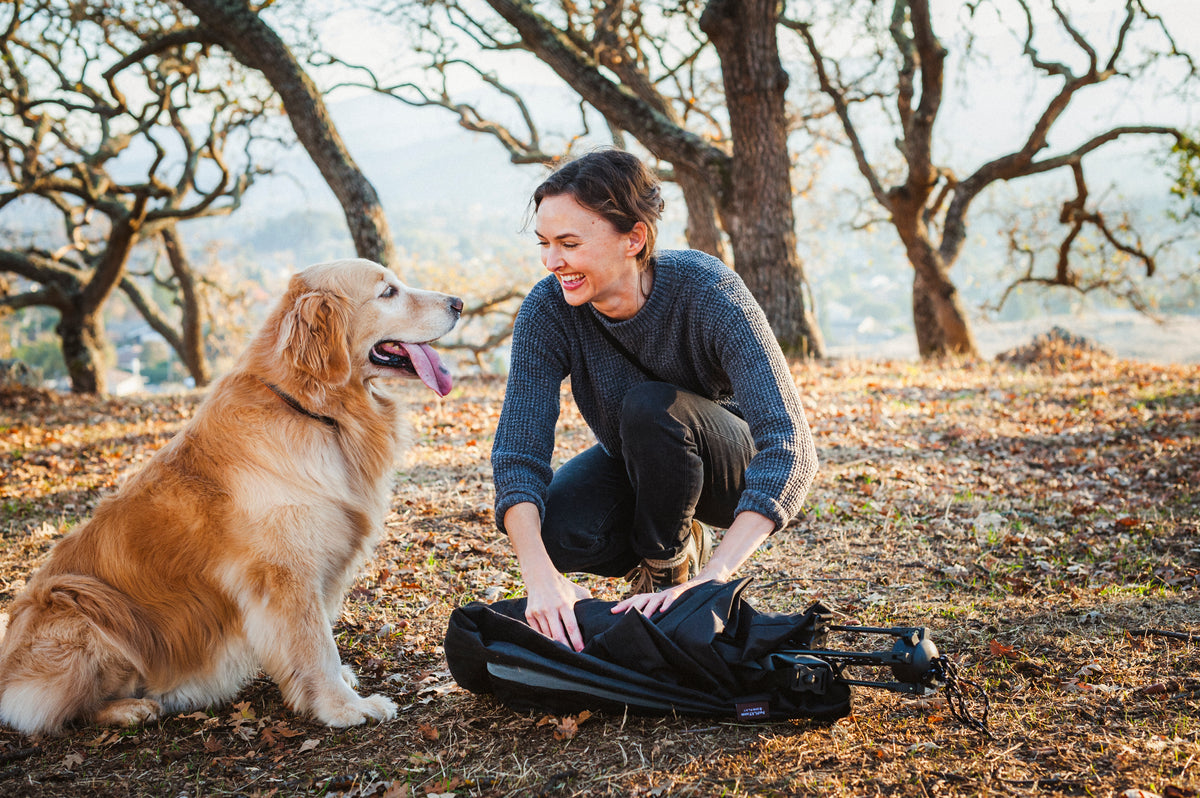If you have a dog that chases a squirrel up a tree or a bunny into a bush at every opportunity they get then they likely have a high prey drive. Though chasing wildlife is natural for dogs, it can lead to trouble on their walks. Below we explore the reasons why dogs chase small animals and how to stop this particular behavior.
What are the dangers of dogs chasing wild animals?
A dog chasing wildlife is a very natural behavior but in some instances, it can be dangerous. These dangers include:
- Injuries: A dog can easily break a bone or get hit by a car if they are chasing a small animal and not looking where they are going.
- Becoming lost: Sometimes dogs are so fast in the pursuit of their prey that it’s easy to lose sight of them. They can easily become lost if they are in an unfamiliar place. A tracking collar is a good idea for dogs with high prey drives.
- Diseases: Some wildlife may be infected with dangerous diseases such as rabies. These diseases are carried by wildlife such as foxes, raccoons, and skunks and can be contracted by your dog.
What causes dogs to chase wildlife?
Dogs chase wildlife due to their prey-drive which is left over from their wolf ancestors. The natural instinct of a wolf to stalk and kill small creatures still remains in dogs. A domesticated dog may not need to find their food but the natural instinct to do so is still in place. Their brain is wired to hunt squeaking injured animals which is why they always take the opportunity to stalk a rabbit or pounce on a mouse.
How to stop your dog from chasing wild animals
Luckily, there are many ways to stop a dog from chasing wildlife whilst also allowing them to play out their natural instincts.
1. Directing your dog’s natural instincts
You can direct your dog’s natural desire to hunt and kill away from small animals and towards toys for high prey drive dogs. These toys mimic the squeaking and hunting of small injured animals and allow your dog to feel like they are hunting and killing but in a safe and fun environment.
Such toys include:
- Tug ropes
- Squeaky toys
- Fetch toys
- Flirt poles
2. Stay away from areas with lots of wildlife
You can’t remove your dog’s natural desire to chase wildlife but you can remove the wildlife from your dog’s walks. Try to choose areas where you know there won’t be a lot of roaming wildlife. Alternatively, you can take your dog to off-leash dog parks which the wildlife has already learned to avoid.
3. Basic commands
Teach your dog basic commands to prevent them from chasing wildlife or get them back during the chase. Basic commands include:
- “Watch me” or “Leave it”: To be used when you notice your dog has spotted an animal and is stalking them or watching them intently.
- “Come” or “Here”: To be used as a recall after your dog has given chase and to break them out of their fixation.
Knowing the body language of a dog about to chase a small animal is also useful. If you notice your dog is starting to walk very slowly, with their body much lower to the ground and their eyes wide and fixated, they are likely stalking and about to give chase.
4. Dog collar bells
The final method to prevent your dog from chasing wildlife involves attaching a bell to their collar. The sound of the bell serves as an alert for the wildlife, signaling that something is coming their way. This gives them ample opportunity to vanish before your dog even has a chance to see them. This is also perfect if you want to take your dog camping, to ward off bigger animals such as bears.
Conclusion
The instinct to chase and catch wildlife is hard-wired into your dog’s brain. Though the behavior is very natural, it can lead to disastrous outcomes if left unchecked. From broken bones to fatal diseases the risks are plentiful. By understanding your dog’s natural prey drive and channeling it away from wildlife you and your dog can enjoy your walks together without disturbing the locals.
About the Author:
Hannah is the proud dog mom of Makai, a Wolfdog with a penchant for naps and snacks. Hannah has a strong love for all animals but a special fondness of dogs. With a Masters degree in Chemistry and a love for writing, Hannah aims to share the latest scientific studies and expert knowledge with dog lovers worldwide through her blog Howling Wolf Pack.







